On your adventures, the DM might reveal that you’ve befriended a special character called a sidekick, who joins your party. This appendix presents the game statistics for sidekicks, of which there are three types:
Expert, an agile and exceedingly helpful jack of all trades
Spellcaster, a magic-user who can cast spells to harm your foes or heal you and your friends
Warrior, a martial companion who specializes in striking your foes or defending you and your allies
The DM will either tell you which type of sidekick to use or let you choose one. It’s up to you and the DM to decide who controls the sidekick in play.
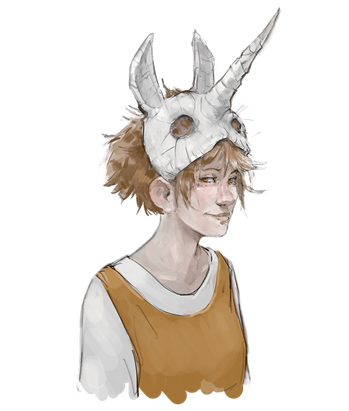 You’re a Dungeon Master, and your party has grown to love one of your NPCs and wants to invite them to help on their adventures. Or, you’re a player and you’re in search of hirelings to help you out as you explore the infamous Tomb of Horrors. When you’re just playing a single adventure, using an nonplayer character stat block from appendix A of the Monster Manual like guard or scout for an NPC is just fine. If you expect a character to tag along with the party for a while and want them to grow over the course of their adventures, then sidekicks are the perfect way to model these NPCs!
You’re a Dungeon Master, and your party has grown to love one of your NPCs and wants to invite them to help on their adventures. Or, you’re a player and you’re in search of hirelings to help you out as you explore the infamous Tomb of Horrors. When you’re just playing a single adventure, using an nonplayer character stat block from appendix A of the Monster Manual like guard or scout for an NPC is just fine. If you expect a character to tag along with the party for a while and want them to grow over the course of their adventures, then sidekicks are the perfect way to model these NPCs!
Sidekicks were first introduced in Dragon of Icespire Peak, the adventure included in the boxed set D&D Essentials Kit. In that set, there are three types of sidekicks: the expert, the spellcaster, and the warrior. They start at 1st level, just like characters, and can advance up to 6th level—a limitation likely imposed because the boxed set itself only advances the characters to 6th level. However, these rules will also appear in updated and expanded form in Tasha’s Cauldron of Everything. Sidekicks have actually undergone a major revamp in Tasha's! This subsystem is now so robust that you could play entire sessions of D&D with sidekicks as heroes, if you wanted—but they also work perfectly for their original purpose of supporting the main characters on their adventures.
This article is a quick run-down of the sidekick rules as they’re presented in Dragon of Icespire Peak and how they've evolved in Tasha’s Cauldron of Everything.
How do Sidekicks Work?
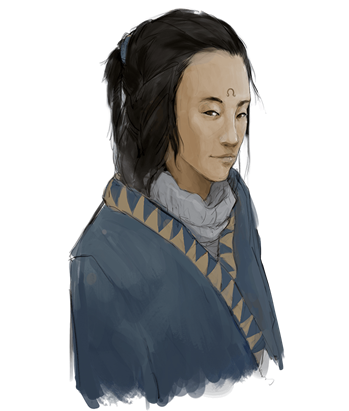 Sidekicks are split into three types: the expert, the spellcaster, and the warrior. These sidekick types are all based on character classes from the Player’s Handbook. The warrior is clearly based on the fighter class, with features like Second Wind, Improved Critical, and Extra Attack plainly drawn from the fighter’s repertoire. Likewise, the expert is inspired by the rogue class, with features like Cunning Action and Expertise making them skillful opportunists. Finally, the spellcaster is the most divergent of the three types of sidekicks. The spellcaster must choose a role, which lets them draw spells from a specific class’s spell list.
Sidekicks are split into three types: the expert, the spellcaster, and the warrior. These sidekick types are all based on character classes from the Player’s Handbook. The warrior is clearly based on the fighter class, with features like Second Wind, Improved Critical, and Extra Attack plainly drawn from the fighter’s repertoire. Likewise, the expert is inspired by the rogue class, with features like Cunning Action and Expertise making them skillful opportunists. Finally, the spellcaster is the most divergent of the three types of sidekicks. The spellcaster must choose a role, which lets them draw spells from a specific class’s spell list.
Just like spellcasting characters, it’s hard to deny that spellcaster sidekicks are the most complicated type of sidekick to create. A little help from the D&D Beyond spells tool, which lets you sort spells by class, by level, and by almost any variable you can think of, will make choosing spells for your sidekicks a breeze. The full sidekick stat blocks and leveling rules, along with some sample sidekick personalities, can be found in Dragon of Icespire Peak. In Tasha’s Cauldron of Everything, sidekicks can now be based on any stat block in D&D, so long as the original creature has a challenge rating of 1/2 or lower! If you want to make generic humanoid sidekicks, the basic Expert, Spellcaster, and Warrior stat blocks from Icespire Peak are still perfect. However, perhaps you befriended Guthash, the giant rat from The Sunless Citadel, or Meepo, the kobold from the same adventure. Now they can easily be your sidekicks and level up throughout your adventure!
Acquiring Sidekicks
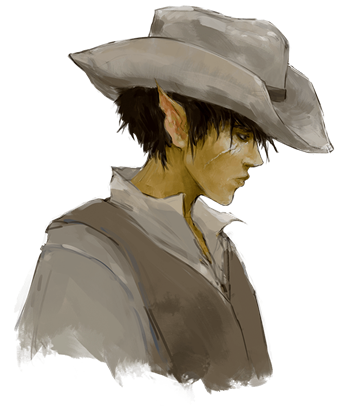 How many sidekicks can join one adventuring party? I’d recommend not having more sidekicks than characters in your party—or in other words, no more than one sidekick per player character, and I’ll explain why below. Beneath that generous limit, though, go wild!
How many sidekicks can join one adventuring party? I’d recommend not having more sidekicks than characters in your party—or in other words, no more than one sidekick per player character, and I’ll explain why below. Beneath that generous limit, though, go wild!
The only question then is: how do you go about acquiring a sidekick?
Characters gain sidekicks as the Dungeon Master’s story and the character’s action permit. This often happens when the DM has an NPC who they want to join you on an adventure, or when the characters want to take an NPC under their wing. Using the characters mentioned above, making Meepo a kobold expert or Guthash a giant rat warrior who follows the character who was nicest to them during the adventure is a great idea! Alternatively, if the characters are the sort of folk who would heartlessly add cannon fodder to their party, and don’t want to put their beloved NPCs in harm’s way, they may seek out mercenaries in town. It’s up to the Dungeon Master to determine how much such hirelings’ services cost. A good rule of thumb is for a mercenary sidekick to charge 1 gp per level per day for levels 1 through 4, 5 gp per level per day for levels 5 through 10, 20 gp per level per day for levels 11 through 16, and 50 gp per level per day for levels 17 through 20. Some mercenaries might be willing to work for lower wages in exchange for a fair cut of whatever loot they find.
Running Sidekicks
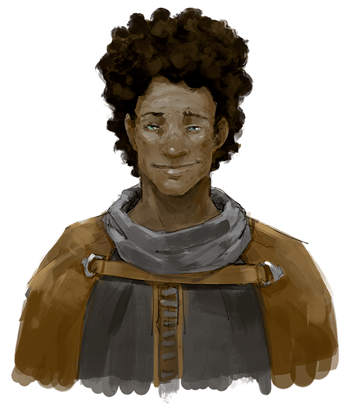 The goal of sidekicks is for them to be simple and easy to run. Why? One obvious reason is that the fewer creatures a Dungeon Master has to deal with at a time, the easier it is for the game to run smoothly. Just like a computer with too many tasks open at once starts to lag, a Dungeon Master juggling too many creatures, spells, and personalities starts to slow. Sidekicks using relatively simple rules helps alleviate this problem.
The goal of sidekicks is for them to be simple and easy to run. Why? One obvious reason is that the fewer creatures a Dungeon Master has to deal with at a time, the easier it is for the game to run smoothly. Just like a computer with too many tasks open at once starts to lag, a Dungeon Master juggling too many creatures, spells, and personalities starts to slow. Sidekicks using relatively simple rules helps alleviate this problem.
But what if there were an even better solution?
What if the players ran the sidekicks?
After all, the sidekicks are on the players’ side. Some of these characters may even have a close relationship with the characters—they may be friends, or family, or someone who owes them a life debt. Even if this sidekick is just a hireling they met at a mercenary outfit back in Baldur’s Gate, one of the characters is playing their salary. Let that player, whoever they are, control how the sidekick acts in combat. Just like Robin is there to support Batman, let the player decide how the sidekick supports their character.
As mentioned above, the simplicity of the sidekick will help keep the player’s mental load down, too. It’s just one extra action to keep track of—and since the sidekick acts on their own initiative, that player won’t forget to make them act on their character’s turn. It’s easy to call out that the sidekick’s turn is on deck, so that their player can prepare for what they want to do.
Playing Sidekicks As Heroes
One fascinating use for sidekicks is how easily they can be used as fully fledged heroes! If you're an experienced Dungeon Master introducing a new group of players to D&D, you could do worse than to let them all play pregenerated sidekicks with simple class features, rather than going through the challenge of character creation for the first time! Because sidekicks were designed with minimal complexity in mind, the expert, spellcaster, and warrior classes are useful for new or younger players. Heck, if you want to play D&D to focus on roleplaying and less on mechanics, these simplified character classes could suit your needs, too!
On the other hand, if your party has acquired a lot of sidekicks over the course of their adventures, it can be interesting to play a "below decks" episode as the sidekicks while the main characters are out adventuring. This is a great idea for a one-shot if one of your usual players is missing and you don't want to carry on without them. What do the sidekick characters usually do while the main cast is saving the world? Maybe their adventures are just as thrilling, but no one ever notices because the heroes are the ones who usually get all the accolades. Best of all, the simpler rules for sidekicks means that players can jump right into playing these characters, without pouring over their statistics to figure out how they work.
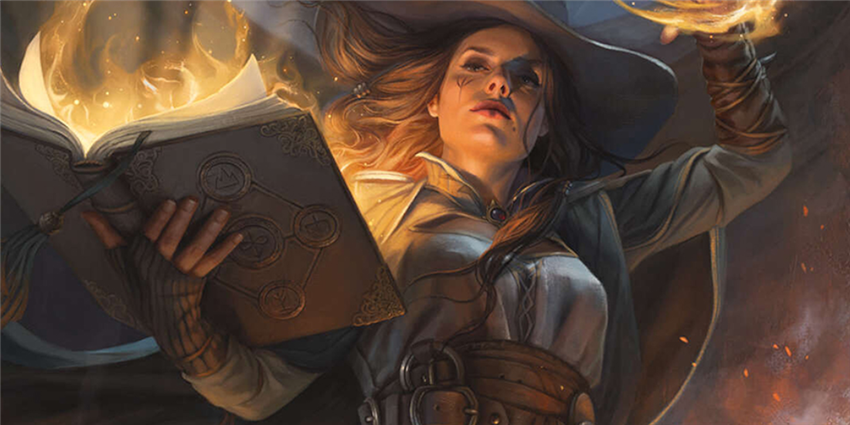
Note: We don't currently have feature support for the sidekicks rules, as presented in Tasha’s Cauldron of Everything. We will be building a proper system to handle sidekicks in a flexible manner. Thanks for your patience, we're hard at work creating tools that will make your D&D-playing experience easier!
Have you used sidekick NPCs in your game before? What other advice do you want to hear about how to run sidekicks? Learn all about sidekicks and more in Tasha’s Cauldron of Everything, available for pre-order on the D&D Beyond Marketplace!
Create A Brand-New Adventurer Acquire New Powers and Adventures Browse All Your D&D Content
 James Haeck is the lead writer for D&D Beyond, the co-author of Waterdeep: Dragon Heist, Baldur's Gate: Descent into Avernus, and the Critical Role Explorer's Guide to Wildemount, a member of the Guild Adepts, and a freelance writer for Wizards of the Coast, the D&D Adventurers League, and other RPG companies. He lives in Seattle, Washington with his fiancée Hannah and their animal companions Mei and Marzipan. You can find him wasting time on Twitter at @jamesjhaeck.
James Haeck is the lead writer for D&D Beyond, the co-author of Waterdeep: Dragon Heist, Baldur's Gate: Descent into Avernus, and the Critical Role Explorer's Guide to Wildemount, a member of the Guild Adepts, and a freelance writer for Wizards of the Coast, the D&D Adventurers League, and other RPG companies. He lives in Seattle, Washington with his fiancée Hannah and their animal companions Mei and Marzipan. You can find him wasting time on Twitter at @jamesjhaeck.








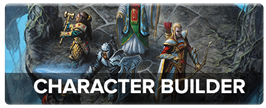
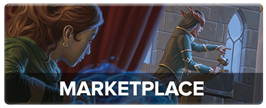
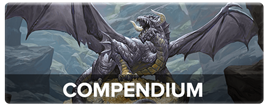
-
View User Profile
-
Send Message
Posted Nov 17, 2020I’m so excited for this!!! I’ve been waiting to do a single person campaign for my wife until I could give her a custom 5e spell casting side kick.
Thank you for your hard work with what you have already added, D&D Beyond! Is there a foreseeable future where sidekicks may be added to an campaign?
-
View User Profile
-
Send Message
Posted Nov 17, 2020I love Sidekicks, but they are a bit of a faff to use online without digital character sheets, even though they are simpler than most characters.
DnD Beyond, any chance of Sidekick character sheets?
-
View User Profile
-
Send Message
Posted Nov 17, 2020Very Interesting! I have been wanting to introduce some friends to D&D, and this looks like a great way to do it.
-
View User Profile
-
Send Message
Posted Nov 17, 2020Looks fun!
-
View User Profile
-
Send Message
Posted Nov 17, 2020Thanks for asking, and thanks James for a fantastic overview and helpful article about Sidekicks! We don't currently have feature support for the sidekicks rules as presented in Tasha’s Cauldron of Everything. We will be building a proper system to handle sidekicks in a flexible manner, and will put out some announcements when we have details! For now I encourage you to keep an eye on our Support Thread (https://www.dndbeyond.com/forums/d-d-beyond-general/bugs-support/87774-tashas-cauldron-of-everything-issues-and-support) and socials for more info!
-
View User Profile
-
Send Message
Posted Nov 17, 2020I really want to make an Artificer sidekick for my party. The Artificer though is distinct enough from the Spellcaster sidekick that I think it would require a new Sidekick class, or at least require modifying the Spellcaster one enough.
Ideas I had so far were to use the Artificer spell list instead, and somehow add in Infusions. But I'm not sure how.
-
View User Profile
-
Send Message
Posted Nov 17, 2020The artificer is one of the most complicated classes in D&D, I would recommend just selecting a few of the abilities and have them stay out of combat if you want them to be a magic item source, or make them a spellcaster with the artificer spell list if you want a spellcaster-type. If you want a battlesmith or armorer, I would select what abilities are necessary and not worry about the others. For the armorer, maybe do a warrior with the armorer's subclass features and infusions.
Good luck trying to make a fully versatile artificer without an entire character sheet or monster stat block.
-
View User Profile
-
Send Message
Posted Nov 17, 2020Once support is added for this on DnD Beyond, an Owlbear cublet warrior should be used as an example in an article. You know, for science.
-
View User Profile
-
Send Message
Posted Nov 17, 2020Great job, and I am craving a little Encounter Of The week :)
-
View User Profile
-
Send Message
Posted Nov 17, 2020I ran a one shot on the weekend and half the players never used a race/class feature at all. These sidekick rules might just be perfect for this sort of thing.
-
View User Profile
-
Send Message
Posted Nov 17, 2020The idea of sidekicks being used as a one-shot when someone can't make it is perfect! I'm totally doing that!
-
View User Profile
-
Send Message
Posted Nov 17, 2020Great work as always James.
I'm so glad to see the Sidekick UA has been made official. I'm also happy they decided to lower the starting CR for potential sidekicks to 1/2 instead of 1. CR 1 was a bit OP.
-
View User Profile
-
Send Message
Posted Nov 18, 2020Honestly the thing I'm most excited about is the fact that the existence of sidekicks made every cr 1/2 or lower monster is now a playable race
-
View User Profile
-
Send Message
Posted Nov 18, 2020I was hoping it would've been set up already, almost along side as the other classes, for dms to choose. But guess will have to wait longer
-
View User Profile
-
Send Message
Posted Nov 18, 2020Don't let your imagination get held back because there are now sidekick rules. 1. Create an Artificer (about 1/2 level of your party members is probably good); 2) Introduce NPC to party. 3) Have NPC join party. 4) Let party have fun, have fun with party. And you can probably use the character builder to make the NPC in a couple of minutes. Areostar2412 has the right idea. There! Problem solved!
-
View User Profile
-
Send Message
Posted Nov 18, 2020I have a couple players that are not big into all the rules but like to play - this is a great idea. Nice!
-
View User Profile
-
Send Message
Posted Nov 18, 2020Low magic campaign's here i come 🤩
-
View User Profile
-
Send Message
Posted Nov 18, 2020They're not impossible; if you use the homebrew feature for monsters, you can create a sidekick stat block pretty easily.
For example, using the UA Sidekick rules, I added a Warrior Tiger to my players' party for a while in our campaign. It works well enough, though it won't be the same when tracking spellcasters and their slots, for example.
-
View User Profile
-
Send Message
Posted Nov 18, 2020Furthermore, I think one could simply take the spellcaster, but focus on spells that enchant weapons or other items..
-
View User Profile
-
Send Message
Posted Nov 18, 2020I tend to just have an encounter with 3 of them in at current level on a separate tab. And then treat them as characters in the other encounters. Would be nice to have sidekicks as a literal character as part of a campaign though. Would make the glow so much easier.